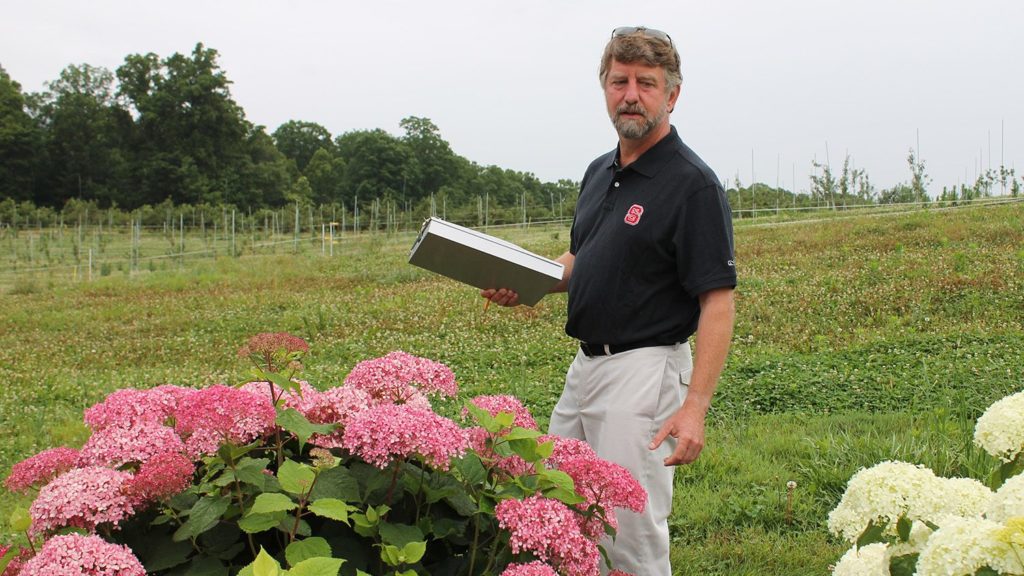Ornamentals
go.ncsu.edu/readext?267685
en Español / em Português
El inglés es el idioma de control de esta página. En la medida en que haya algún conflicto entre la traducción al inglés y la traducción, el inglés prevalece.
Al hacer clic en el enlace de traducción se activa un servicio de traducción gratuito para convertir la página al español. Al igual que con cualquier traducción por Internet, la conversión no es sensible al contexto y puede que no traduzca el texto en su significado original. NC State Extension no garantiza la exactitud del texto traducido. Por favor, tenga en cuenta que algunas aplicaciones y/o servicios pueden no funcionar como se espera cuando se traducen.
Português
Inglês é o idioma de controle desta página. Na medida que haja algum conflito entre o texto original em Inglês e a tradução, o Inglês prevalece.
Ao clicar no link de tradução, um serviço gratuito de tradução será ativado para converter a página para o Português. Como em qualquer tradução pela internet, a conversão não é sensivel ao contexto e pode não ocorrer a tradução para o significado orginal. O serviço de Extensão da Carolina do Norte (NC State Extension) não garante a exatidão do texto traduzido. Por favor, observe que algumas funções ou serviços podem não funcionar como esperado após a tradução.
English
English is the controlling language of this page. To the extent there is any conflict between the English text and the translation, English controls.
Clicking on the translation link activates a free translation service to convert the page to Spanish. As with any Internet translation, the conversion is not context-sensitive and may not translate the text to its original meaning. NC State Extension does not guarantee the accuracy of the translated text. Please note that some applications and/or services may not function as expected when translated.
Collapse ▲
Ornamentals include floriculture and nursery products, typically grown for aesthetic purposes in landscape design, gardens, and cut flowers. North Carolina has been the fastest-growing agricultural sector over the last decade. However, nurseries and greenhouses are not isolated geographically, and the movement of both propagation and finished stock occurs across the globe. Due to this movement of plant material, North Carolina is faced with the constant threat of introducing exotic or regulated pathogens into our state on infested plant material or in potting substrates.
Ornamental Resources
Floriculture
The Floriculture Program focuses on major flowering plants, cut flowers, nutrition, pests, greenhouse management, technology, business, and cultivation techniques. NC State floriculture research clarifies ornamental growth and flowering habits, identifying mechanisms and disorders interfering with production and regulation.
JC Raulston Arboretum
JC Raulston Arboretum introduces, displays, and promotes plants that diversify the American landscape, there by benefiting our communities economically, environmentally, and aesthetically, as well as providing educational experiences to the general public, students of all ages, and the green industry.
Landscaping
The Horticultural Science Landscape Design Program provides innovative research and outreach in the art and science of design of landscapes using plants. Landscape horticulture addresses mastery in ornamentals, turfgrass, residential, construction, urban trees, and nursery crops.
Nursery Crops
The Nursery Crop Science website is an outreach project of the Department of Horticultural Science at NC State University and is dedicated to providing current information for Extension field faculty, students, researchers, and growers of commercial horticultural products.
Ornamental Plant Breeding
The Center for Plant Breeding and Applied Plant Genomics at North Carolina State University develops new cultivars, germplasms, and parental lines. The interdepartmental research programs have faculty members providing skills in DNA-based marker technology, plant transformation, genomics, proteomics, metabolomics, and basic field breeding.


